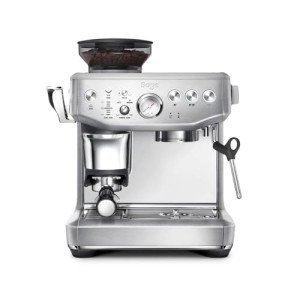Home Use Espresso Machines: A Comprehensive Guide
Espresso machines have actually become a staple in many homes as coffee lovers seek to replicate café-quality brews in the comfort of their cooking areas. The rise in appeal has caused a varied market filled with different models, functions, and prices. This short article intends to supply a helpful overview of home use espresso machines, helping readers navigate their options effectively.
Understanding Espresso Machines
Espresso machines work by forcing warm water through finely-ground coffee under high pressure, leading to a focused coffee beverage called espresso. There are a number of types of espresso machines categorized based upon their brewing techniques and level of automation. The most typical types consist of:
- Manual Espresso Machines: These require the user to manage the pressure and water flow, enabling a more hands-on coffee-making experience.
- Semi-Automatic Espresso Machines: These use automatic control over water pressure, while the user by hand grinds and tamps the coffee.
- Automatic Espresso Machines: With the push of a button, these machines instantly manage the circulation of water, making it easier to brew espresso with constant results.
- Super-Automatic Espresso Machines: These all-in-one machines deal with grinding, tampering, brewing, and even milk frothing, making them perfect for users searching for convenience.
- Pill or Pod Machines: These use pre-packaged coffee pods to develop espresso with very little effort, but they restrict option in brewing strategies and flavors.
Table: Comparison of Espresso Machine Types
| Type | Control Level | Alleviate of Use | Cleaning Level | Perfect For |
|---|---|---|---|---|
| Manual | User-controlled | Moderate | High | Coffee purists |
| Semi-Automatic | Partial automation | Moderate | Moderate | Home baristas |
| Automatic | Totally automated | Easy | Low | Busy individuals |
| Super-Automatic | Completely automated | Very simple | Extremely low | Convenience candidates |
| Capsule/Pod | Fully automated | Extremely simple | Extremely low | Casual drinkers |
Key Features to Consider
When picking a home use espresso machine, it's important to think about various functions that can considerably affect the quality of espresso and user experience.
- Pressure: Look for machines that offer a minimum of 9 bars of pressure, as this is thought about ideal for developing espresso.
- Boiler Systems: Single vs. dual boiler systems figure out temperature stability and the capability to brew espresso and steam milk simultaneously.
- Grinder: Integrated mills enable for newly ground coffee, which enhances taste. Think about Espresso Maker Online with adjustable grind settings.
- Milk Frother: For those who take pleasure in cappuccinos and lattes, a built-in steam wand or automatic frother is crucial.
- Size and Design: Consider your cooking area area and visual preferences. Machines are available in various sizes, from compact to large setups.
- Rate: Home espresso machines can vary from a few hundred to several thousand dollars, so it's crucial to establish a budget before exploring choices.
Advantages and disadvantages of Home Use Espresso Machines
| Pros | Cons |
|---|---|
| Benefit of developing coffee in your home | Preliminary financial investment can be high |
| Quality of espresso is frequently superior | Requires some ability, specifically with manual machines |
| Ability to experiment with tastes | Upkeep and cleaning can be labor-intensive |
| Can save cash in the long run | Not all machines will match every coffee preference |
Maintenance and Cleaning Tips
Preserving an espresso machine is crucial for prolonging its life and guaranteeing constant brew quality. Here are some useful suggestions:
- Regular Descaling: Minerals from water can develop in the machine. Descale every 1-3 months, depending upon water hardness.
- Daily Cleaning: Rinse portafilters, baskets, and steam wands after each use to avoid coffee oils from constructing residue.
- Use Filtered Water: This can help reduce mineral accumulation and improve the taste of coffee.
- Replace Gaskets and Seals: These components might break over time and ought to be replaced to preserve pressure and performance.
- Check out the Manual: Each machine has specific care instructions; following these will ensure durability.
Frequently Asked Questions About Home Use Espresso Machines
Q1: What is the best budget espresso machine?The best budget espresso machine typically depends upon specific requirements, but models like the DeLonghi EC155 or the Breville Bambino are popular among users for providing fantastic value. Q2: How long do home espresso machines normally last?With proper upkeep, home espresso machines can last anywhere from 5 to 15 years, depending upon the quality of the machine and frequency of use. Q3: Can I make cappuccinos and lattes with any espresso machine?While most espresso machines can make cappuccinos and lattes, having a reputable
steam wand or frother is important for accomplishing the ideal milk texture.
Q4: Are super-automatic machines worth the investment?For those who focus on convenience and fast brewing, super-automatic machines can be worth the investment, though they might lack some customizability in brew strength and flavor. Q5: What types of coffee beans are best for espresso?While individual choice contributes, beans labeled as" espresso "blends are generally roasted darker, producing rich flavors and a creamy texture when brewed.
Purchasing a home espresso machine can change the everyday coffee routine into something special, elevating home brews to café quality. By comprehending the various kinds of machines, crucial functions to think about, upkeep requirements, and weighing the
advantages and disadvantages, consumers can make educated decisions that match their individual choices. As the espresso culture continues to grow, no matter the choice, every brew can be a delicious experience waiting to be enjoyed.

